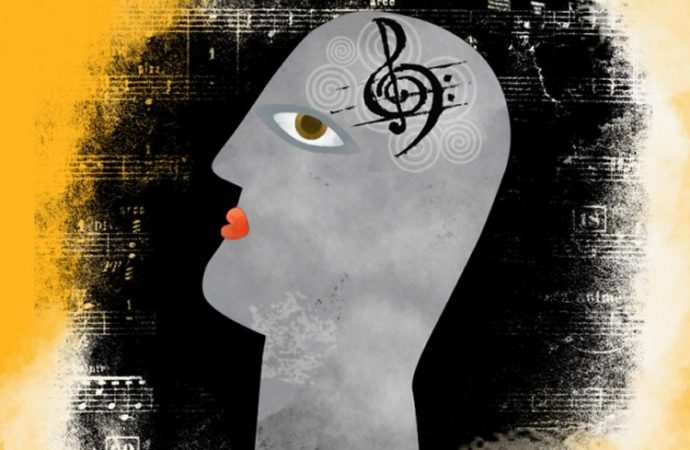Music is not only a universal constant in human societies, but it is also old in evolutionary terms. Similar to how physical exercise shapes the body, music tones the brain for auditory fitness. Few people, however, become professional musicians through years of intensive sensory-motor training, which is what makes music an advantageous tool to study brain adaptation, and musicians the ideal model to study brain changes driven by experience.
Over the last twenty years, our interest in the interaction between the brain and music grew. We came to understand that musicians have different cerebral characteristics, which correlate with the age they started playing and how intensively they did it. After years of training, their brain is capable of forming new neural networks and rearrange its old ones, a phenomenon known as neuroplasticity. Because the musicians’ brain is simultaneously involved in several tasks, studying it in a natural setting allows the researchers to have a holistic understanding of the learning process.
How does the brain react to music?
In our research at the University of Jyväskylä, we studied a group of 18 musicians and 18 nonmusicians. The criteria for musicianship was to have a degree in music, with more than five years of musical training, and to have worked professionally as a performing musician.
To measure and map their brain activity, we used the fMRI (Functional Magnetic Resonance Imaging). This noninvasive technique records a signal whenever the blood flow to a specific brain area changes, as the result of increased neural activity.
Participants’ only task was to listen to three musical pieces in their earphones: Stream of Consciousness by Dream Theater; Adios Nonino by Astor Piazzolla; and Rite of Spring (comprising the first three episodes from Part I: Introduction, Augurs of Spring, and Ritual of Abduction) by Igor Stravinsky. These are a progressive rock/metal piece, an Argentinian New Tango, and an iconic 20th-century classical work, respectively, thus covering distinct
musical genres and styles.
Symmetry
Musicians’ brains, particularly pianists’, responded more symmetrically than those of nonmusicians. The symmetry was especially evident within the motor system, the part of the brain involved with the movement. Pianists need to move their hands in a coordinated manner during their performances and, thus, this symmetry may reflect a more efficient communication across brain hemispheres required for coordination.
But not all musicians’ brains react in the same way. Take string and keyboard players, for instance. Both need great motor skills and bimanual hand coordination. Playing the strings, however, enforces not only a more asymmetric position and movement between hands and fingers but also a strict asynchrony between left-hand finger movements and right-hand bowing.
On the other hand, keyboardists’ brains reflect an enhanced symmetry in motor areas. Moreover, playing the keyboard requires higher hand-eye coordination skills than playing a string instrument. This coordination results from multiple-part reading (one musical part per hand), which requires the transfer of visual information from one side of the brain to the motor areas, on the opposite side of the brain. Thus, keyboardists have a more symmetrical visual system compared to string players.
Mastering distinct instruments require different posture, kinematics, and competencies, which can help explain why the symmetry patterns of the musicians’ brains are different. In other words, symmetrical brain responses reflect symmetrical gestures in musical training.
Rhythm
And what about the rhythm? We investigated how musicians and nonmusicians process the clarity of the pulse while listening to music.
In order to keep track of the pulse, nonmusicians would seem to pay attention to the music’s acoustic content to a greater extent than musicians. Musicians, on the contrary, would seem to rely more on learned metric rules. Rules and lifelong musical training allow them to have better timekeeping abilities, a crucial skill in performances. Moreover, after years of motor training, musicians become highly efficient at predicting upcoming musical events. They tend to mentally simulate sound-producing actions, which facilitates them to anticipate the music they are listening to.
Musical Training in real-life settings
Musical training is unique regarding its breadth and permeation throughout the nervous system. To master music demands way more than listening: to perceive, and especially produce, music requires that the musician processes and integrates information from the auditory, visual, somatosensory, and motor domains, all at the same time.
But, because it is such a complex, multidimensional phenomenon, the dynamic quality of musical training is often overlooked in the lab. Therefore we need to study the music-brain interaction in conditions that are close to real-life. The field of Music Information Retrieval (MIR) has evolved greatly in this sense. New techniques now allow us to investigate how the brain processes music using natural stimuli.
Our study supports using a naturalistic approach to obtain a wider understanding of what happens in the brain when dealing with complex tasks, such as perceiving rhythm. By using a more natural environment (encompassing real music during a listening task without interruptions or self-report from the participants), we showed that laboratory conditions resembling real-life listening contexts could yield reliable results in neuroscience, which is critical to modeling the way the brain understands the world.
Likewise, this work shows how experience in one modality (motor training) can affect another modality (auditory perception). Music constitutes a rich framework to explore plasticity, this is, the ability of the brain to change itself. Understanding the impact and magnitude of musical experience on our brains can help to understand neuroplasticity better, and this knowledge could be used in clinical settings to improve the life quality of patients with neurodegenerative conditions.
Read the full dissertation here: Burunat, I. (2017). Brain integrative function is driven by musical training during real-world music listening. Ph.D. dissertation. Jyväskylä Studies in Humanities, 302. University of Jyväskylä, Jyväskylä, Finland
Share your Science
The Share your Science section aims at giving students and researchers a space to share their thesis with a broader audience. UA Magazine wants to increase the visibility of recent academic work and serve as a bridge between universities and societies. The research has been financially supported by the Academy of Finland and TEKES.
Image Credit: Wuhuiru55 / Wikimedia Commons



